Posted: August 21, 2015
A Galaxy More Like the S6 than the Note 4
In this galaxy not that long ago, Samsung released what could arguably be the first device to put ‘phablet’ in all of our vocabularies, the Galaxy Note.
Fast forward to their recent announcement, Samsung boasted how they knew (“way”) back then people wanted mobile devices with large(r) screens, and with that said, they announced the Galaxy Note 5. It appears Samsung believes full-heartedly if they continue to give the people what the people want, then the people will continue to give Samsung what Samsung wants - a profit.
Familiar Design Wins
The Galaxy Note 5 has more in common with the Samsung Galaxy S6 and S6 Edge than with its predecessor the Note 4. Both Notes do have the same large 5.7” screen and both come with an S-Pen, but the glass and metal enclosure of the Note 5, its thickness, and even its Shannon design are basically the Galaxy S6 and S6 Edge, with a larger screen and a newly improved S-Pen.
| Function | Manufacturer | Part Number |
|---|---|---|
| Application Processor | Samsung | Exynos 7420 |
| Baseband Processor | Samsung | Shannon 333 |
| RAM | Samsung | K3RG2G20BM-DGCH |
| NAND | Toshiba | THGLF2G8J4LBATD |
| Power Management | Samsung | S2MPB02X01 |
| Power Management | Samsung | S2MPS15A0 |
| RF Transceiver | Samsung | Shannon 9331 |
| Audio CODEC | Cirrus Logic | WM1840E |
| NFC Nodule | Samsung | N5DDSS1 |
| WiFi / Bluetooth | Samsung | 5054L2 F720D1 |
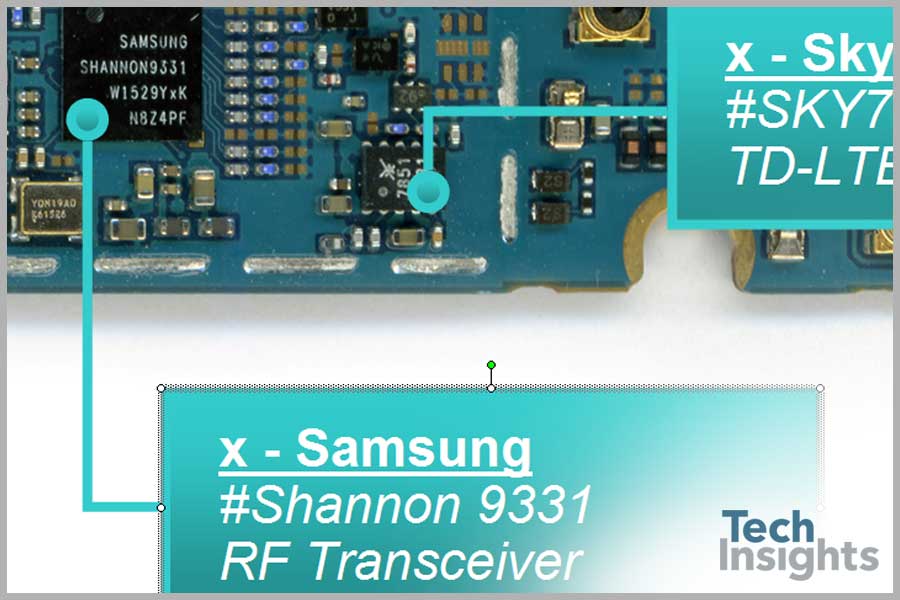
Shannon 9331 RF Transceiver
We found one Shannon difference in the Galaxy Note 5, a new Shannon 9331 RF Transceiver, and what appears to be a big win for Murata, supplying three of the four RF antennas switches, while Skyworks and Avago continue to win with their set of respective RF power amplifiers.
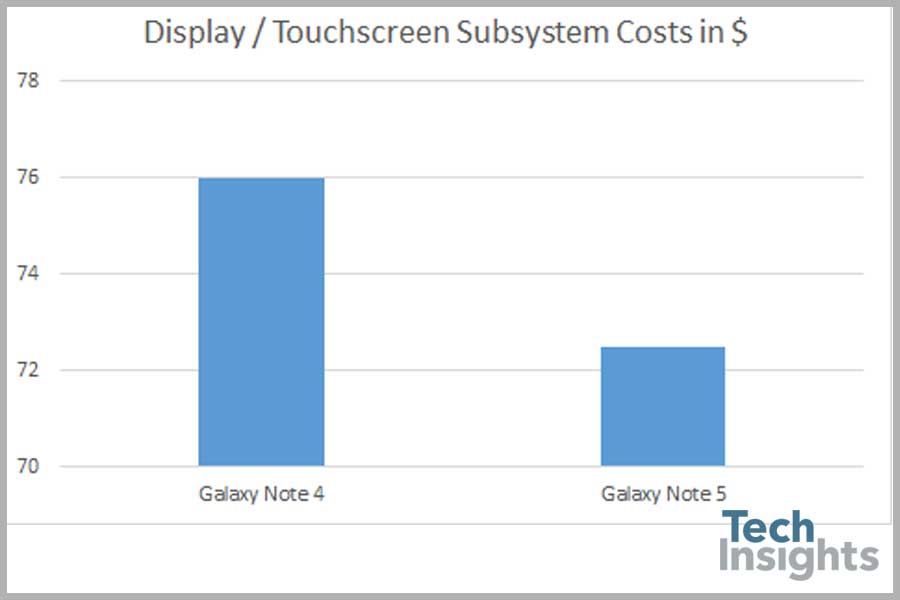
Display / Touchscreen Subsystem Costing
We did mention the displays for both the Galaxy Note 4 and Note 5 have similar specifications. Mobile device displays are most often the heaviest weight on the overall BoM of the device, and the Galaxy Note 5 display cost is no exception here. However some time has past since the release of the Note 4, and with the natural cost and pricing reduction over time we estimate the Galaxy Note 5 display cost to be slightly lower than that of the Note 4.
Some Needed Savings
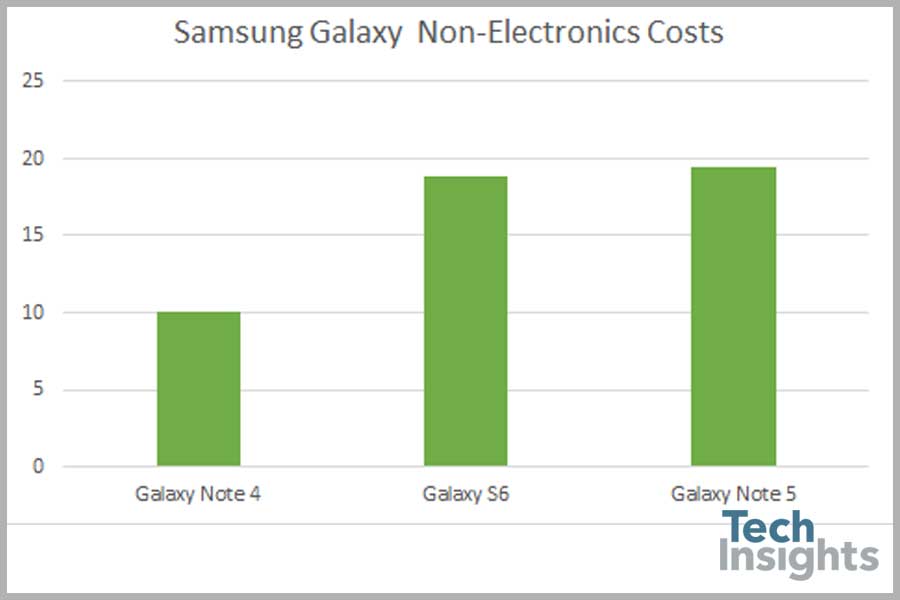
Non-Electronics Costing
The slight savings Samsung reaped in the lower costs of the display were quickly spent, and then some, when Samsung abandoned the plastic enclosure used in the Galaxy Note 4 and jumped all in for the Galaxy Note 5, using the same glass and metal design seen in Galaxy S6 and S6 Edge. This gives the Note 5 more heft, but more importantly, the non-electronic BoM between the Note 4 and the Note 5 is considerably different. The Galaxy Note 5 non-electronics costs easily doubled that of the Galaxy Note 4 by our estimates. However, comparing the Note 4’s plastic design to that of the Note 5 glass and metal design would be like...comparing Apples to oranges.
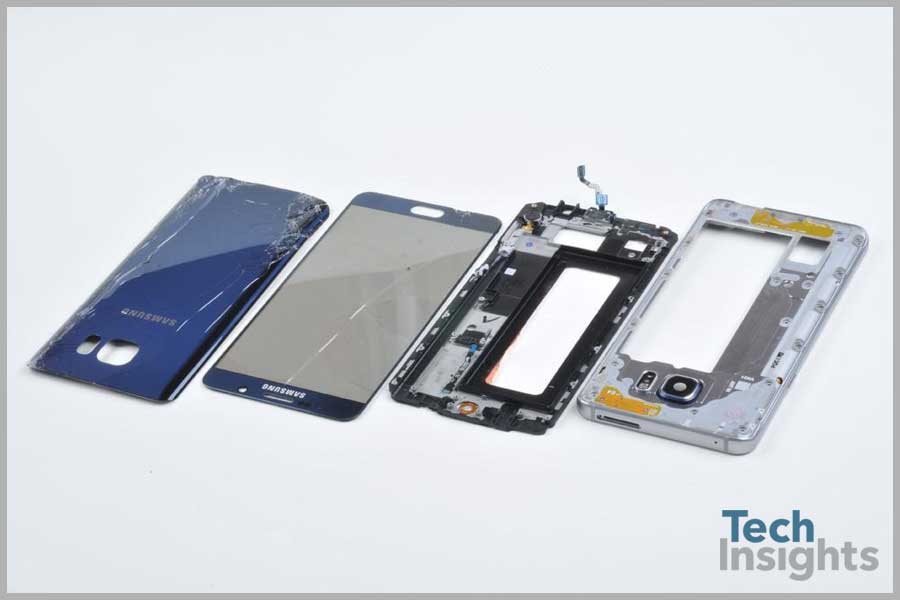
Enclosure
Before we talk about that fruit company, let’s stay on point and compare Samsung versus other Samsungs. The Galaxy S6 and S6 Edge devices were Samsung’s first truly non-plastic enclosures, so it was no surprise the Note 5 non-electronics costs were only slightly more than the S6 devices due to the larger size of the Galaxy Note 5.
Another Penny Pinched
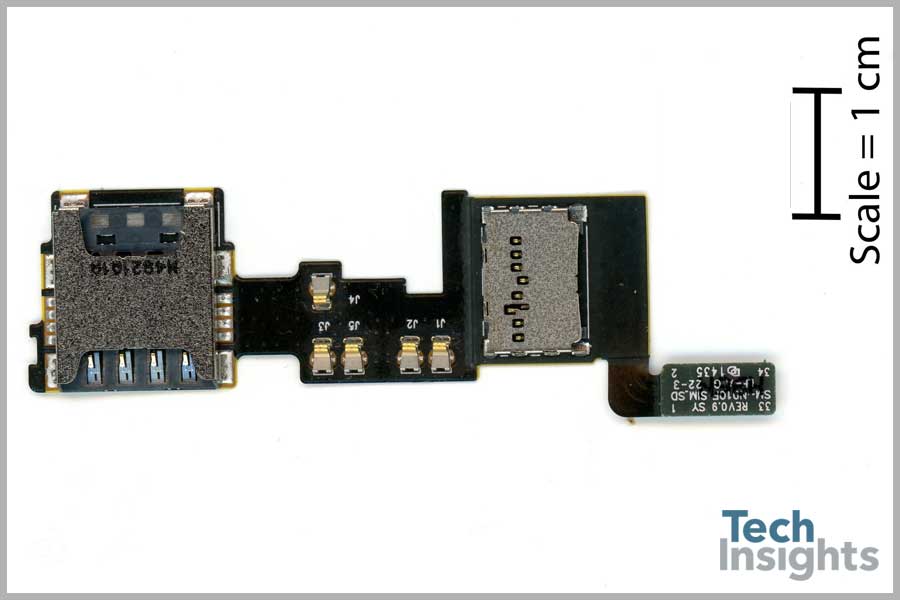
Samsung Galaxy Note 4 External Memory Board - not needed in the Galaxy Note 5
We should mention there were other savings, too, such as Samsung foregoing the external memory port. We don’t know if this will be a deal breaker for users or not - we are more interested in what it means from a cost and bill of materials standpoint.
The benefits are seen immediately: less design, one less PCB, less testing, less opportunities for failures, at least one less component to procure, a slightly faster manufacturing time, and we are sure there are more. All of these add up to savings, pure and simple. The detractors of not having an external memory port: consumers may be slightly upset.
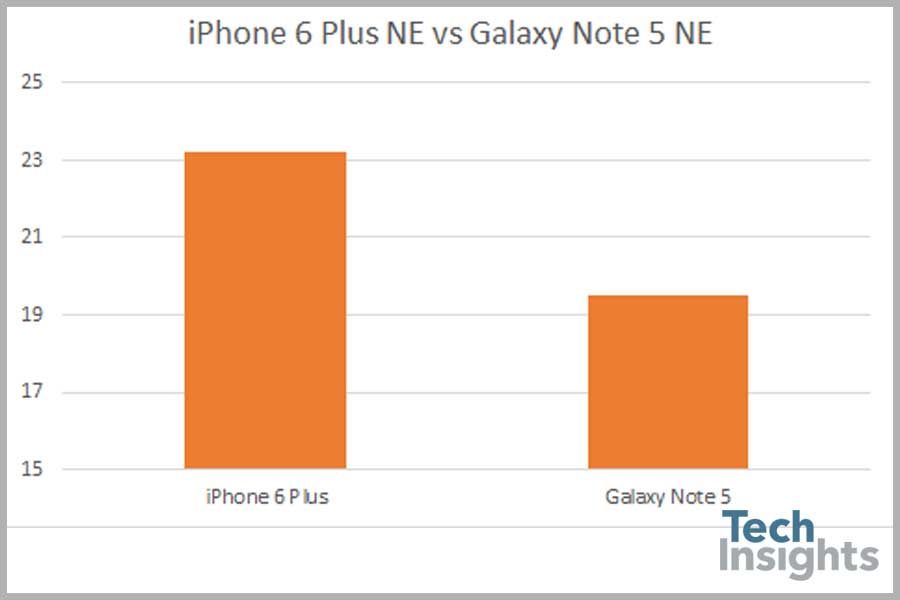
Comparison
Did someone say Apples?
Yes, of course we did. With the exception of the Apple 5C, most iPhones have had a significant percentage of their overall costs go towards non-electronic parts. We compared the Galaxy Note 5 against the Apple equivalent iPhone 6+. Interestingly, Apple “wins” here, outspending Samsung by almost $5 per device on mechanical materials. This could be attributed to the Apple aluminum design, which we hear could be changing here very soon to a less bendable metal combination.
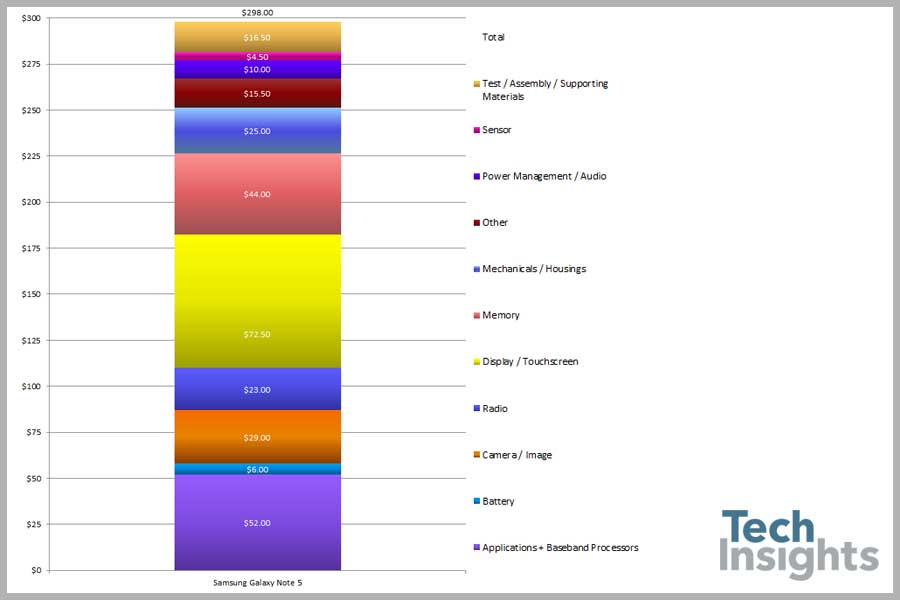
Comparison
This device is definitely more on a level of the iPhone 6 Plus with the inclusion of the glass and metal enclosure, a more enhanced S-Pen, more RAM, and what seems to be a solid Shannon RF design. At the end of the day, not a lot of surprises with the Note 5. Samsung saved here and there in some areas and then spent the saving in others, like more memory and mechanical costs.
The relatively duplicate Shannon design, the use of the same Exynos 7420 processor, Micron memory, Avago and Skyworks still making their appearances in the familiar spots means at the end of our Deep Dive analysis we are expecting to see the IC electronic costs to be very close to the same as the Galaxy S6 and S6 Edge. Our first QTT estimates for the Galaxy Note 5 indicate this is going to be true.
OnePlus, Apple, and Samsung
If you say the title fast enough it almost sounds like a complicated math problem, and may be a problem for Xiaomi. The Samsung Galaxy Note 5 wasn’t the only device to arrive in labs last week, we also received the OnePlus 2, a device garnering a lot of attention as well.
Instead of the Chinese powerhouse Xiaomi having to contend with the popular Apple and Samsung brands, a third popular OEM like OnePlus will definitely make things more interesting in the Chinese market. OnePlus took some media strategy notes, making their latest flagship, the OnePlus 2 available by invitation only (initially). Xiaomi will have to answer with something big for their next rumored flagship, the Xiaomi Mi 5. Check out our OnePlus 2 quick turn to get a quick look and some insights of how this latest device compared to the original OnePlus flagship.
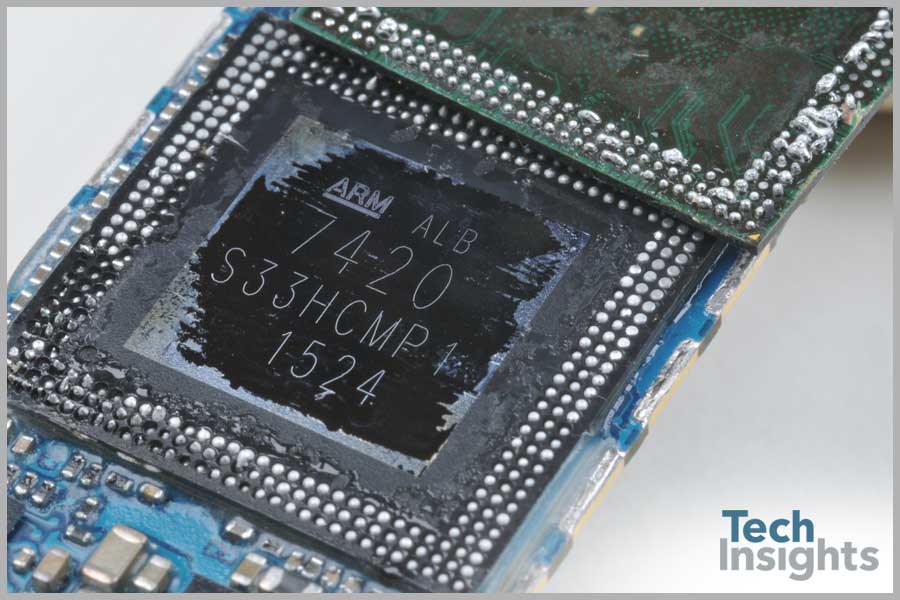
Samsung Exynos 7420 Applications Processor









